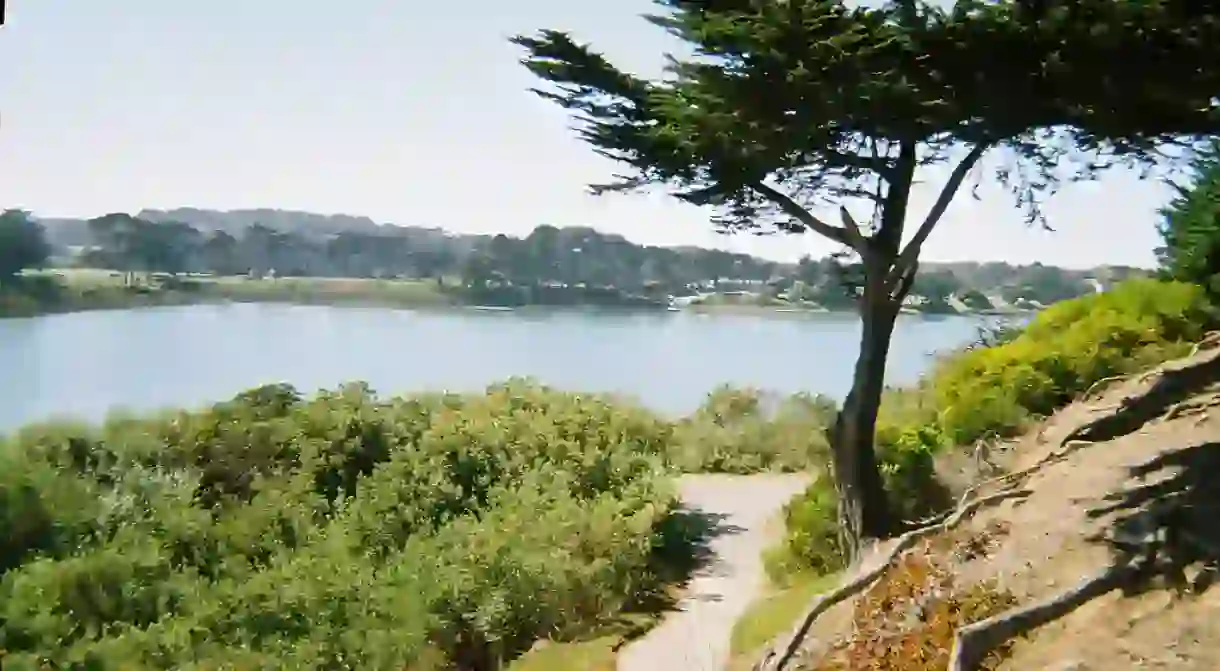A Brief History Of San Francisco's Lake Merced

In the southwest corner of San Francisco you’ll find the beautiful body of water known as Lake Merced. While it retains a stable status as a major resource and recreational area for San Franciscans today, read on to learn the twists and turns of its turbulent history.
In 1775, as far back as is known, Captain Don Bruno de Heceta deemed the lake ‘Laguna de Nuestra Señora de la Merced.’ The area surrounding Lake Merced was initially known as Galindo ranch and inhabited by the Ohlone people, the Native American group that inhabited much of Northern California before European settlement. The lake was an isolated body of water until 1852, when heavy rains created a fissure in the land that allowed the lake’s water to run all the way to the ocean. The lake lost 30 feet of water as a result, and this stream to the sea lasted until at least 1881.

The rights to the lake’s water were originally owned by Francisco De Haro, the Spanish magistrate of Yerba Buena. The year 1868 marked the Spring Valley Water Company’s purchase of the lake and the surrounding areas, after which the lake became a major water supplier for the city of San Francisco as the city’s main reservoir. Spring Valley proceeded to buy all the local supply of water, creating a monopoly that lasted for decades. Plans were established to expand the lake, until finally, the O’Shaughnessy Dam was constructed in the early 1900s. The dam established the Sierra Nevada’s Hetch Hetchy Reservoir, providing an alternate source of water and allowing the city to gain some control over water distribution.
Soon, Spring Valley sold off its land, making way for what is now golf courses and an apartment complex. It wasn’t until the 1950s that the San Francisco Public Utilities Commission put the land under the advisement of the Recreation and Parks Department, and the land was transformed into a park bounded by John Muir Drive, Skyline Boulevard, and Lake Merced Boulevard.
The most notorious incident in the lake’s history, however, took place on its shore in 1859. It was that September when David S. Terry, Chief Justice of the California Supreme Court, took part in an infamous duel with United States Senator David C. Broderick. Once friends and political allies, the two politicians developed severe disagreements about abolitionism, which finally came to a head in the form of a duel. Broderick was killed in the incident, and Terry was acquitted of his crimes.

Soon after the event, duelling became illegal in most states, including California. The location of the duel was named a landmark in 1932 and commemorated with a plaque, which can still be found there. There are even markers directing visitors toward the site today, as well as two granite obelisks marking the places where each dueller stood.

Today, Lake Merced is surrounded by three golf courses and residential areas. Nearby you can find a number of educational institutions, including a high school, an elementary school, and San Francisco State University. The Stonestown Galleria shopping center is close by, as are Fort Funston and the ocean, and multiple rowing teams practice on the lake itself. The park is a popular space for hikers, bikers, boaters, and birdwatchers, with a 4.5 mile trail surrounding the lake itself, in addition to a pier, a boathouse, and several picnic areas.













